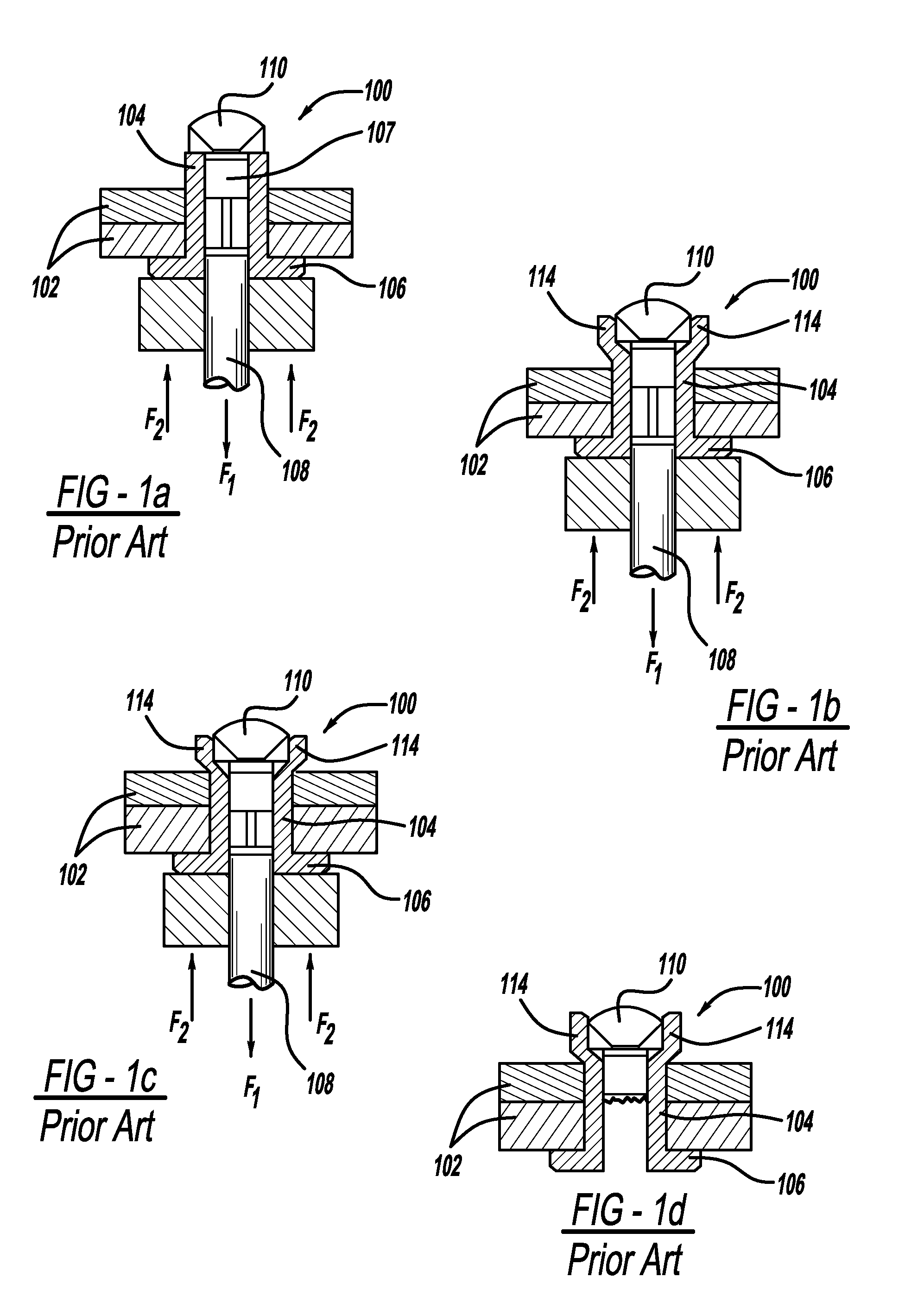Blind rivet
- Summary
- Abstract
- Description
- Claims
- Application Information
AI Technical Summary
Benefits of technology
Problems solved by technology
Method used
Image
Examples
Embodiment Construction
[0020]FIG. 2 illustrates a pull through blind rivet 200 embodying the present invention. The blind rivet 200 has a cylindrical rivet body portion 202 having a bore 204 extending entirely through it along an axis 206. The rivet body portion 202 has a flange portion 208 extending from it at one end, and has a partially ribbed outer surface 210. The flange portion 208 also has a ribbed surface 212 on the side of the flange facing the direction of the rivet body portion 202. A mandrel 214 having an elongated mandrel stem 216 and a deformable mandrel head 218 extends through the bore 204 in the rivet body portion 202. The mandrel head 218 is wider than the bore 204 extending through the rivet body portion 202. The mandrel is secured to the rivet body prior to setting by an interference fit between the stem and the bore of the rivet body.
[0021]The operation of the blind rivet 200 in FIG. 2, will now be described with reference to FIG. 3. As shown in FIG. 3a, the pieces of material 220, 22...
PUM
| Property | Measurement | Unit |
|---|---|---|
| Thickness | aaaaa | aaaaa |
| Size | aaaaa | aaaaa |
| Distance | aaaaa | aaaaa |
Abstract
Description
Claims
Application Information
 Login to View More
Login to View More - R&D
- Intellectual Property
- Life Sciences
- Materials
- Tech Scout
- Unparalleled Data Quality
- Higher Quality Content
- 60% Fewer Hallucinations
Browse by: Latest US Patents, China's latest patents, Technical Efficacy Thesaurus, Application Domain, Technology Topic, Popular Technical Reports.
© 2025 PatSnap. All rights reserved.Legal|Privacy policy|Modern Slavery Act Transparency Statement|Sitemap|About US| Contact US: help@patsnap.com



